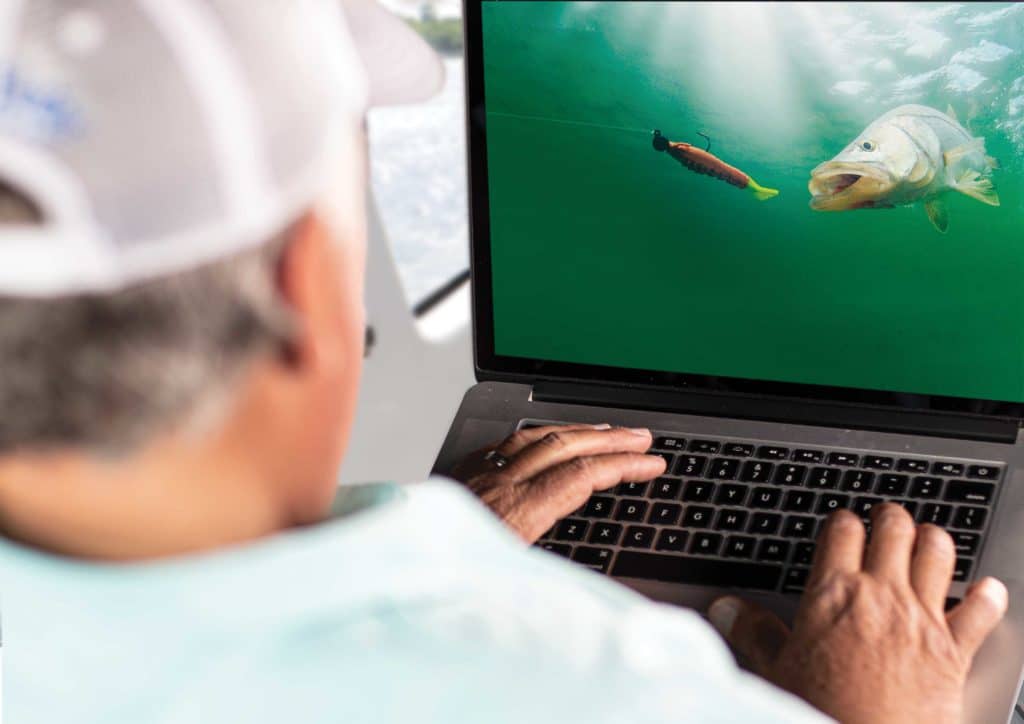
Ocean depths remain a mysterious realm. Though advances in sonar technology help demystify the underwater world, even the best machines require interpretation. Wouldn’t it be great if we could see for ourselves?
Today you can thanks to submersible video camera systems that let you peer below the surface.
Ethical Angling?
Before delving further, let’s address the goliath grouper in the swimming pool: Do underwater cameras belong in the toolbox of an ethical saltwater angler? Some might view them as cheating, but the same could be said about other technological advances such as live-sonar systems, which let you view fish and lures in real time.
I’ve used underwater cameras to explore, then employed the information to fish more effectively later. This, in my mind, represents ethical usage.
Surprising Discoveries
A past trip to Santa Catalina Island off the coast of Southern California serves as a good example. I had just purchased a GoFish camera and sent it down to check out a 250-foot-deep ridge. Sure enough, it captured video of Pacific rockfish hugging the bottom. But then, while retrieving the camera, it captured an unexpected sight: schools of California yellowtails swimming about 150 feet above the ridge.
Armed with this intel, we immediately rigged our lines to target the coveted yellowtails, and caught three big fish before the nomadic school moved on.
Cable Guy
There are two types of remote underwater video camera systems for anglers: Those that have a self-contained battery and attach to a fishing line, and the kind tethered by a cable that supplies power to the camera and feeds imagery to a display on the boat. Aqua-Vu and MarCum are among the best-known brands in the latter category.
The major advantage of cable cameras is the ability to view video in real time. Both companies offer cameras that shoot in high-definition (up to 1080p), with 110- to 120-degree fields of view. Most have the capability to illuminate the depths as well. Aqua-Vu uses a ring of infrared lights around the lens.
Recording video footage for playback and study later is possible with some systems. The MarCum Pursuit HD ($549.99), for instance, offers a built-in MP4 DVR able to record on a 128 GB micro-SD card, letting you play back video on a computer.
Cable systems also let you adjust the camera’s viewing orientation. The Aqua-Vu camera, for example, can be adjusted to shoot imagery ahead, behind, straight down, or angled 45 degrees down and upward. A stabilizing fin keeps the camera steady in a current or as the boat drifts, and you can add 14 ounces of auxiliary weight to bring the total heft to just over 3 pounds, helping to keep the cable vertical.
On Display
Most cable systems come with their own displays. The MarCum Pursuit HD includes a 5-inch high-definition color screen with a built-in cable reel on the back side. Controls on the display’s case let you adjust brightness, contrast and sharpness. The Aqua-Vu HD 7i Gen 2 ($629.99) features a 7-inch daylight-viewable screen with a base that serves as a cable reel. A control pad on the case allows you to adjust illumination, zoom and more.
The majority of these systems have integral 12-volt batteries. The MarCum Pursuit HD system, for instance, includes a rechargeable battery that provides up to six hours of continuous run time. The rechargeable battery for the Aqua-Vu HD 7i Gen 2 provides seven hours of run time.
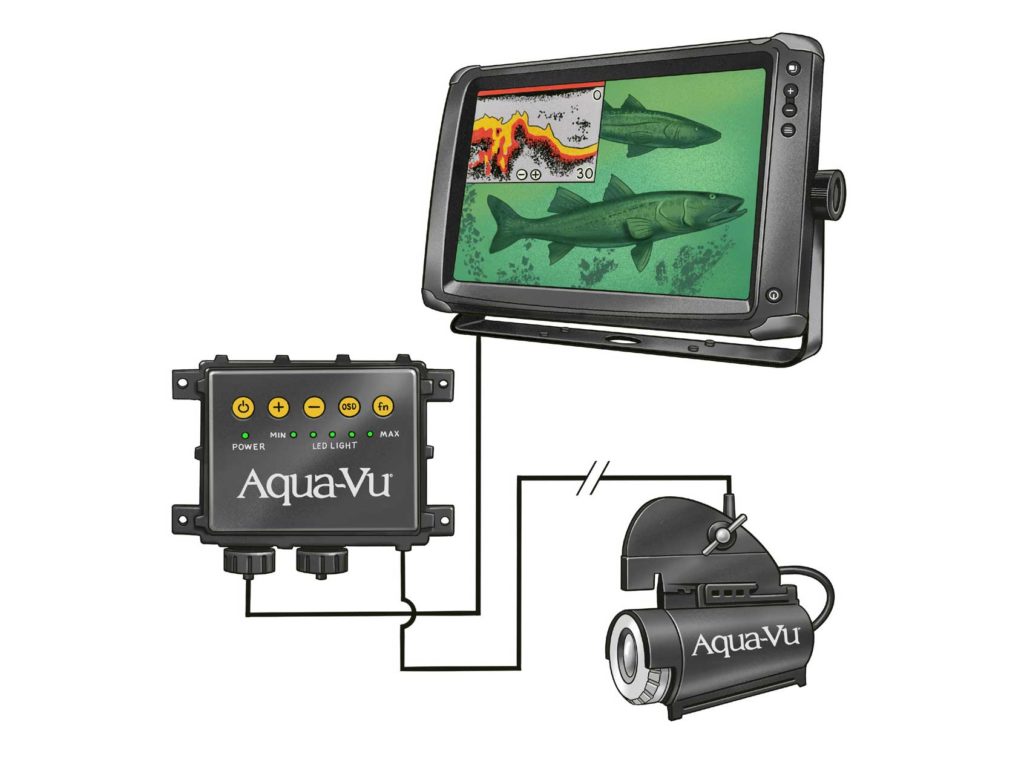
The Multi-Vu Pro video setup ($799.99), a relatively new system from Aqua-Vu, relies on the boat’s existing multifunction display and onboard DC power system. It includes HDMI and RCA ports, and connector cables to network with video-enabled MFDs from brands such as Furuno, Garmin, Humminbird, Lowrance and Simrad. It comes with a control module and power cable to tie into the boat’s 12-volt system. A cool feature is the ability to split the screen to view both the fish finder and streaming video at the same time.
Wireless Wonders
Cable systems were initially designed for freshwater anglers, so the cables are usually 50 to 75 feet long. Aqua-Vu does offer an optional 125-foot cable; however, some saltwater anglers might want to view structure and fish at even greater depths, and that’s where a video camera such as the GoFish ($199.99) proves more practical. It’s warrantied to depths of 500 feet, but the company claims it will actually survive to depths of 2,000 feet.
You tie this cigar-shaped video camera to your fishing line—the main line at the top and the leader at the bottom, where the lens is located. If you want to scout the water column or bottom, simply attach a sinker to the other end of the leader. You can also tie a hook or lure to the leader and fish while the camera is attached.
Retrieve and Review
Two internal, rechargeable lithium-ion batteries power the GoFish for an hour and a half at a maximum resolution of 1080p at 60 fps. You can increase battery run time to two hours by lowering the resolution to 1080p at 30 fps or 720p at 60 fps. The camera is available with an optional LED light, but ambient light proves sufficient to 250 feet.
There’s no streaming video. For easy playback and editing, the GoFish records one-, three-, five- or 10-minute clips on a 64 GB micro-SD card (not included). You can download footage to your mobile device once you reel the camera back in, or use a micro-SD reader to review the video on a laptop.
The GoFish does not float; neither does the Aqua-Vu nor MarCum video camera. So, avoid snagging them on the bottom, or you could lose your camera and the ability to see for yourself.
New Electronics
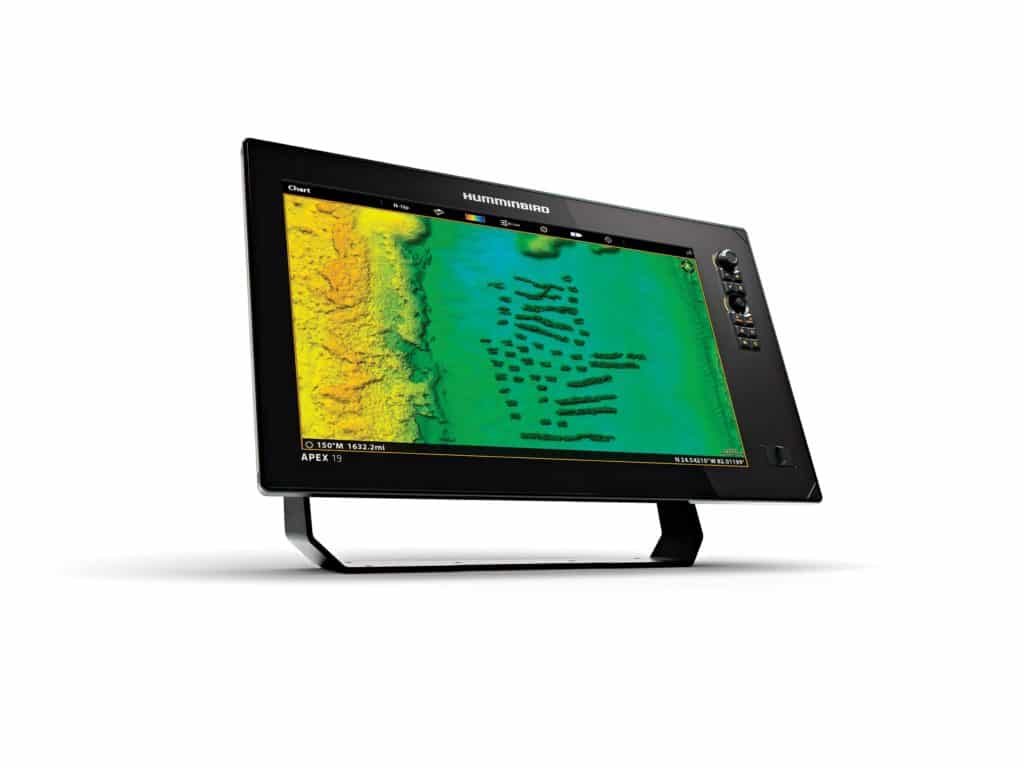
Humminbird’s CoastMaster Premium – Florida charts include shaded relief that depicts bottom structure such as wrecks, reefs and rock piles in ocean waters off the Sunshine State in 3D. Compatible with the Humminbird Helix G3/G3N and newer models, and all Solix and Apex units, the charts feature aerial imagery, bottom-hardness auxiliary contour layers, and all the features of existing CoastMaster charts. $299; humminbird.com
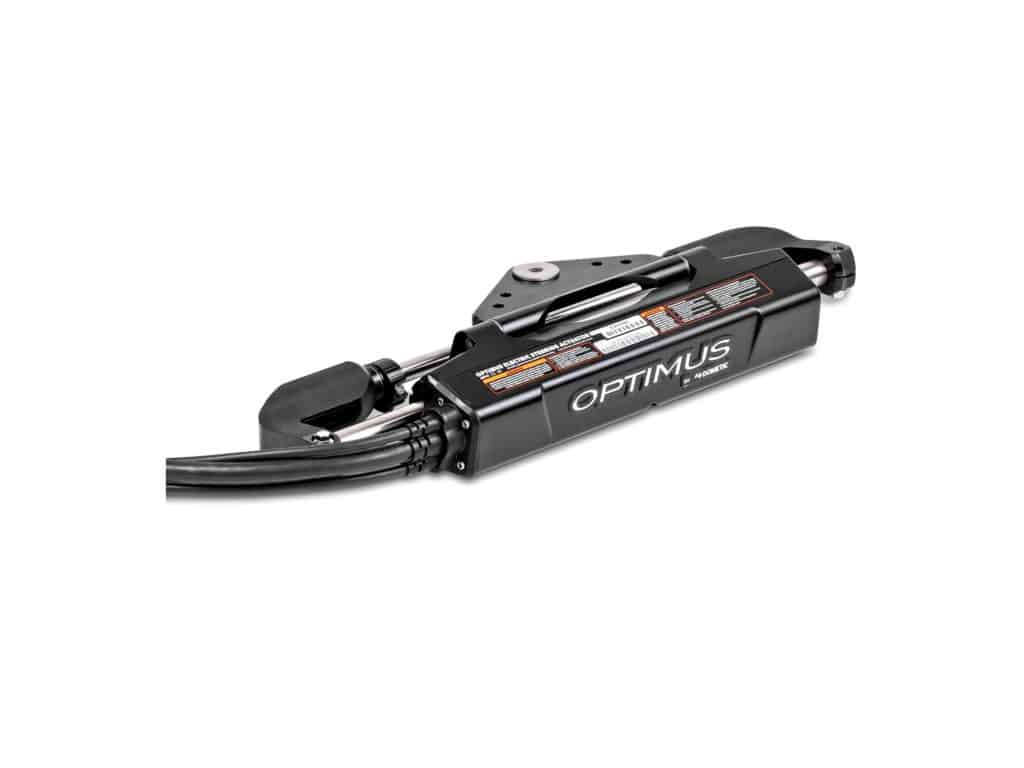
Optimus all-electric steering from Dometic serves as a direct replacement for hydraulic steering for outboards. It integrates with an electronic helm, Optimus joystick, EPS or autopilot systems. It works with single, twin, triple and quad installations. Programmable settings include speed-sensitive lock-to-lock turns and speed-sensitive wheel effort. $5,700 for a single-outboard system, $9,700 for twins; dometic.com
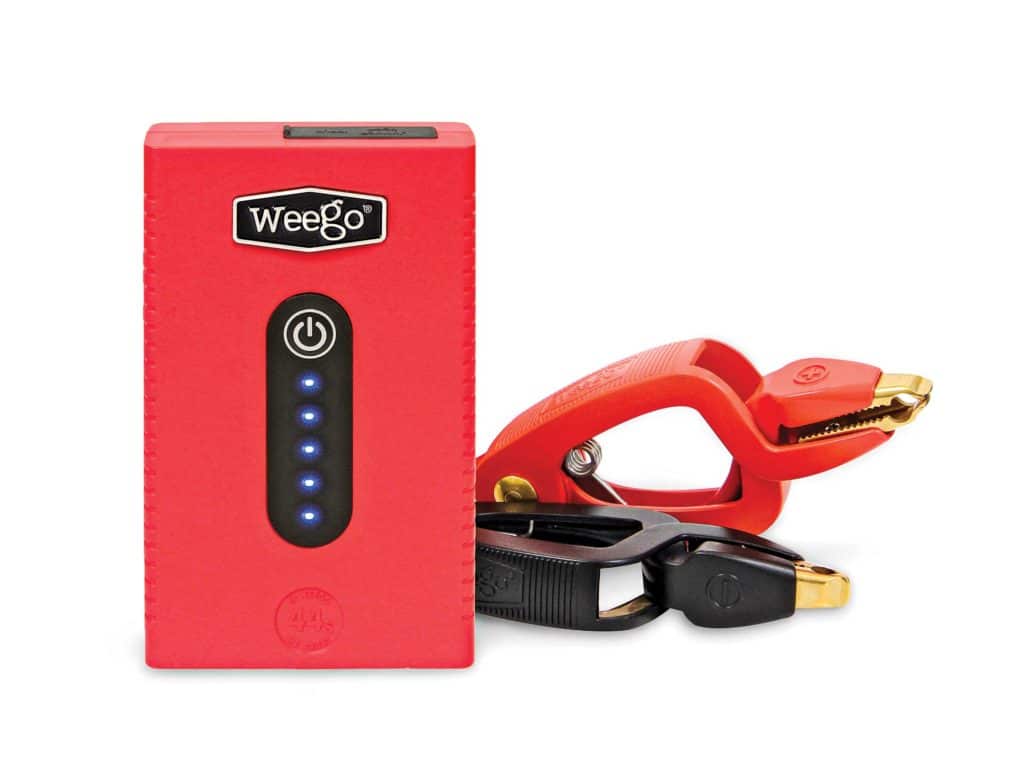
Weego’s N44s jump-starts boats and most tow vehicles. With a year of standby power on a single charge, it offers a peak current of 1,700 amps and cranking current of 440 amps. It comes with Smarty Clamps, a micro- USB cord for recharging and a carry bag. Anti-spark, reverse-polarity, overheat and power-surge protections are built in. UL-certified, the N44s is IP65-rated for water, dust and dirt resistance. $74.99; myweego.com









